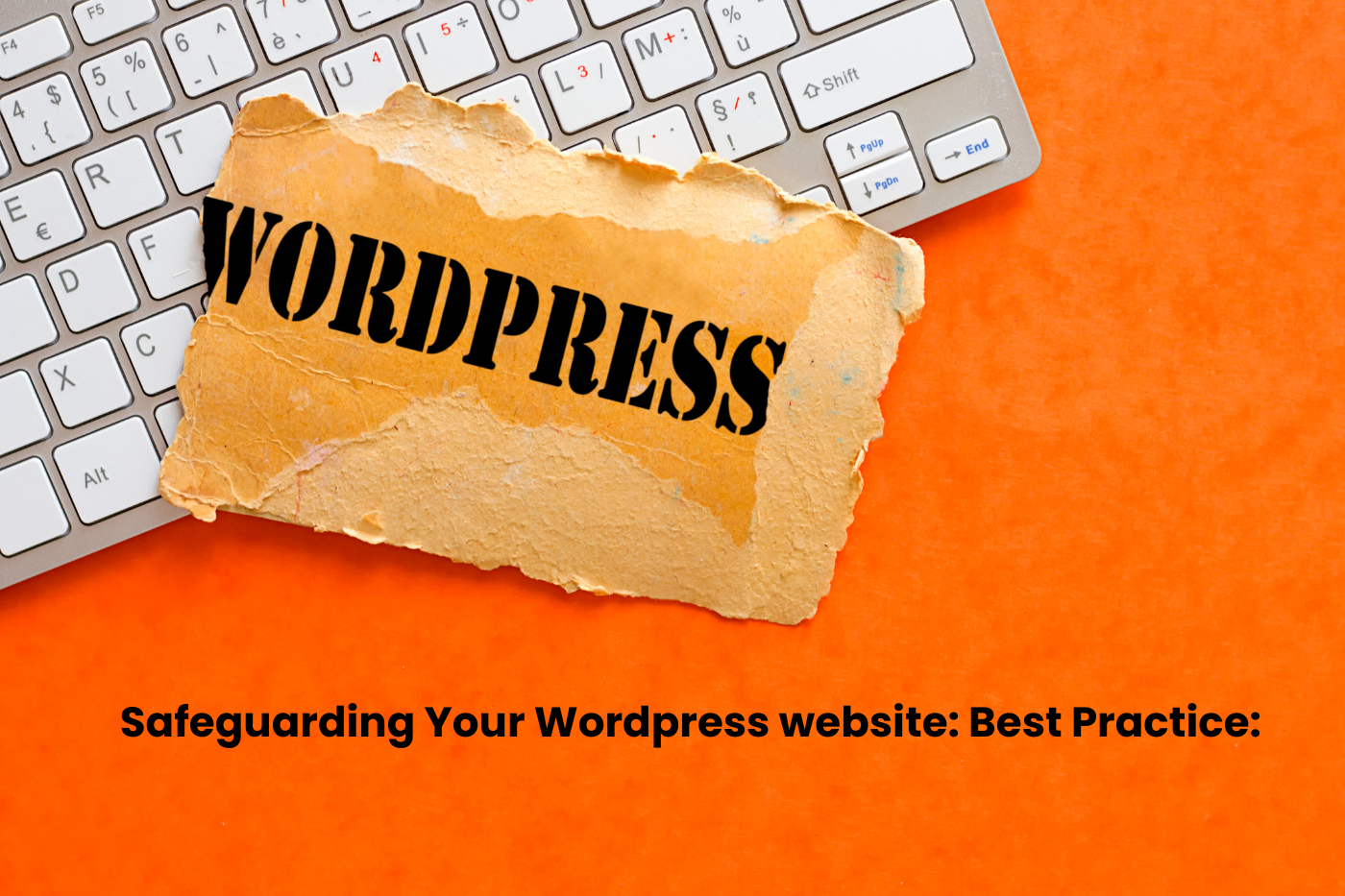BLOG'S

Securing Your WordPress Site: Best Practices for Complete Security
Today, your WordPress website is not merely a presence—its a target. As the most popular content management system used, WordPress serves to host over 40% of the internet. This means it's an attractive target for cyberattacks. From malware and brute force to SQL injection attacks, there are simply too many threats to mention. If you've ever typed WordPress website admin login or searched WordPress website free templates, chances are you already know how simple it is to create a site—and, as it happens, how simple it is to neglect security.
In this tutorial, we'll take you through best practices for securing your WordPress website, from identifying threats to selecting the appropriate tools and plugins.
Understanding WordPress Security
Security is more than just installing a plugin and calling it a day. It's a holistic approach involving regular maintenance, proactive monitoring and strategic configuration. Your WordPress website can only be as strong as its weakest point. Whether you’re focused on WordPress design, plugin selection, or WordPress website creation, security must always be part of the equation.
What Are the Common Security Threats?
Before you go about fixing things, it's important to know what you're fighting against. The following are the most frequent security dangers:
- Brute Force Attacks: Robot scripts that attempt thousands of username-password pairs to breach your login.
- SQL Injections: Hackers inject malicious code into your database through form fields.
- Malware: Buried programs that can take control of or spy on your website.
- Cross-Site Scripting (XSS): Targets vulnerabilities in your site to execute malicious scripts in the browser of your visitors.
- Outdated Themes or Plugins: They can be doors for hackers if not updated.

How to Secure Your Website against Threats?
To secure your WordPress website, you have to adopt a multi-layered defense strategy. Here's how:
Use Strong Passwords and Usernames
Most website owners use defaults such as admin or weak passwords such as 123456. Don't be one of them. For your WordPress website admin login, use a strong, unique password and update it periodically. Use a password manager for added security.
Avoid:
- Using your name or site name as your username
- Reusing old passwords
- Easy-to-guess combinations
How to Keep WordPress Up-to-Date?
Outdated WordPress core, plugins, or themes are the weakest points for hackers to enter. Always ensure that your:
- WordPress core
- Installed plugins
- Activated themes
…stay updated. Auto-updates or the use of WordPress website maintenance services can make this process easier. These services scan and update your website regularly.
Securing WordPress Plugins and Themes
Install only plugins and themes from reputable sources. Refrain from third-party websites providing WordPress website free templates or paid plugins for free—these usually have malicious malware included.
Select Reputable Sources:
- WordPress.org repository
- Reliable developers
- Licensed marketplaces such as ThemeForest or Elegant Themes
Also, use tools such as WordPress theme finder to find secure, trustworthy themes suited to your site's requirements.

Recommended Security Plugins
There are a few free WordPress security plugins that can assist you in securing your WordPress website:
- Wordfence Security: Live threat protection and firewall
- iThemes Security: Patching of common vulnerabilities
- Sucuri Security: Provides auditing, malware scan, and WAF
- All In One WP Security & Firewall: Simple interface with robust protections
These plugins can watch your website, sense suspicious activity and stop attacks before they happen.
Setting Up Your WordPress Security Settings
Security starts at the settings level. Here are quick tips:
- Turn off file editing in the dashboard by adding
define( 'DISALLOW_FILE_EDIT', true );to your wp-config.php file. - Alter the default login URL with a plugin such as WPS Hide Login.
- Limit the number of login attempts to stop brute-force attacks.
- Turn off XML-RPC if not being used, as it's usually exploited.
These settings may appear technical, but they're essential for your WordPress design a website plan.
Best Practices for WordPress Security
- Use HTTPS with an active SSL certificate
- Scan your website regularly for malware
- Audit user roles and permissions
- Activate two-factor authentication (2FA)
- Delete unused plugins and themes
These basic steps can slash the risk of a breach considerably.
Set Up a Web Application Firewall (WAF)
A Web Application Firewall (WAF) exists between your WordPress website and the global internet. It blocks bad traffic before it touches your server.
Some of the best WAFs are:
- Cloudflare WAF
- Sucuri Firewall
- Astra Web Security
The addition of a WAF is a critical security layer against DDoS attacks, malware, and zero-day threats.

The Importance of Regular Backups
Regardless of how secure your website is, you must always expect the worst. That's where backups are useful. When your site is hacked, backups enable you to restore your content quickly without data loss.
Backup Tools:
- UpdraftPlus
- BlogVault
- BackupBuddy
- Jetpack Backup
Ensure you store your backups in a remote location such as Google Drive, Dropbox, or Amazon S3—not on the same server.
Monitoring and Response
Continuous monitoring helps detect anomalies early. If you’re running an Instagram website, Website WhatsApp integration, or even a blog, it’s crucial to know when suspicious activity is happening.
Use security dashboards from plugins like Wordfence or Sucuri. Set up email alerts for critical issues like login attempts or file changes.
What to Do If Hacked?
Even with all precautions, hacks can happen. Here’s a step-by-step recovery plan:
- Detect the breach: Scan your site with tools for malware.
- Go offline: Place your site in maintenance mode to safeguard visitors.
- Restore a clean backup: Roll back to a previously known safe version of your site.
- Reset all passwords: For all users with access.
- Scan and clean database: Eliminate suspicious code or injected SQL.
- Reinstall plugins and themes: From known sources only.
- Bolster your defenses: Enact absent security measures.
You can also recover quickly and safely with the help of professionals or WordPress website maintenance services.
Conclusion
Securing your WordPress website isn't a single activity—it's a continuous endeavor. Whether you're creating an Instagram website, incorporating Website WhatsApp support, or launching your newest WordPress design, security should be ingrained in your entire website design process.
Take time to create WordPress website plans that include strong passwords, frequent updates and secure configurations. Employ the free WordPress security plugin methods cited above, back up regularly and keep an active eye.